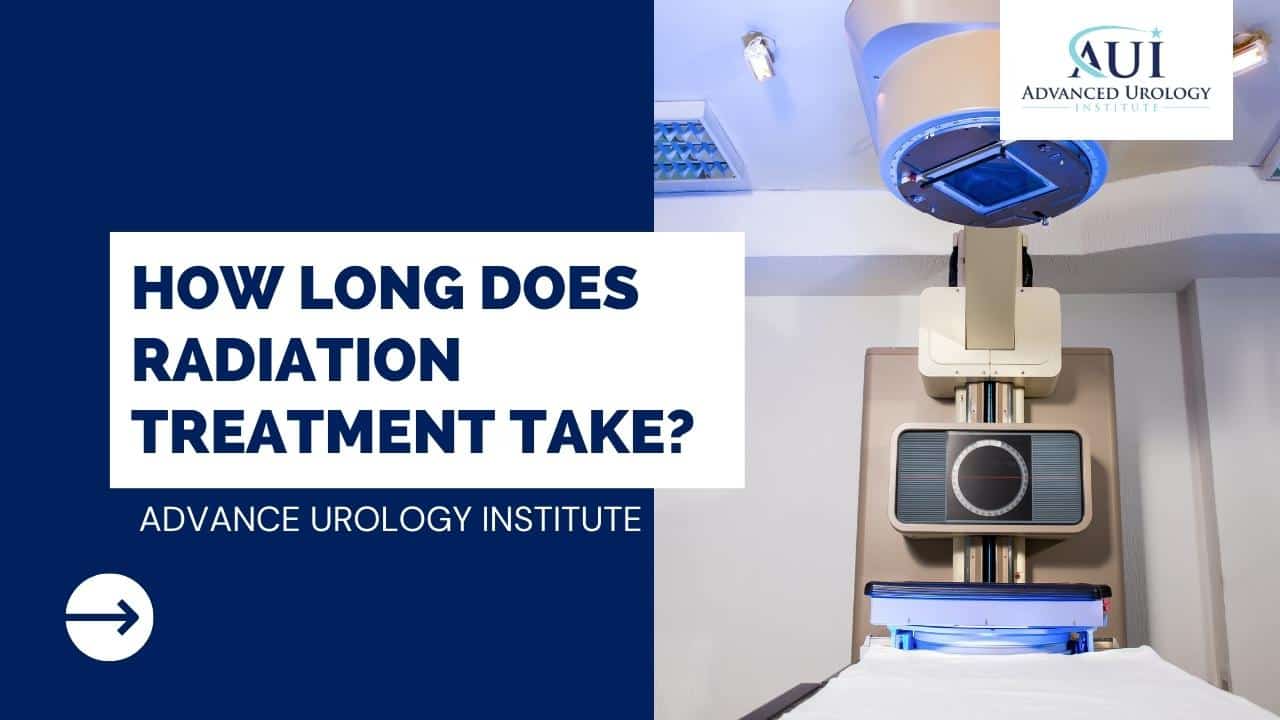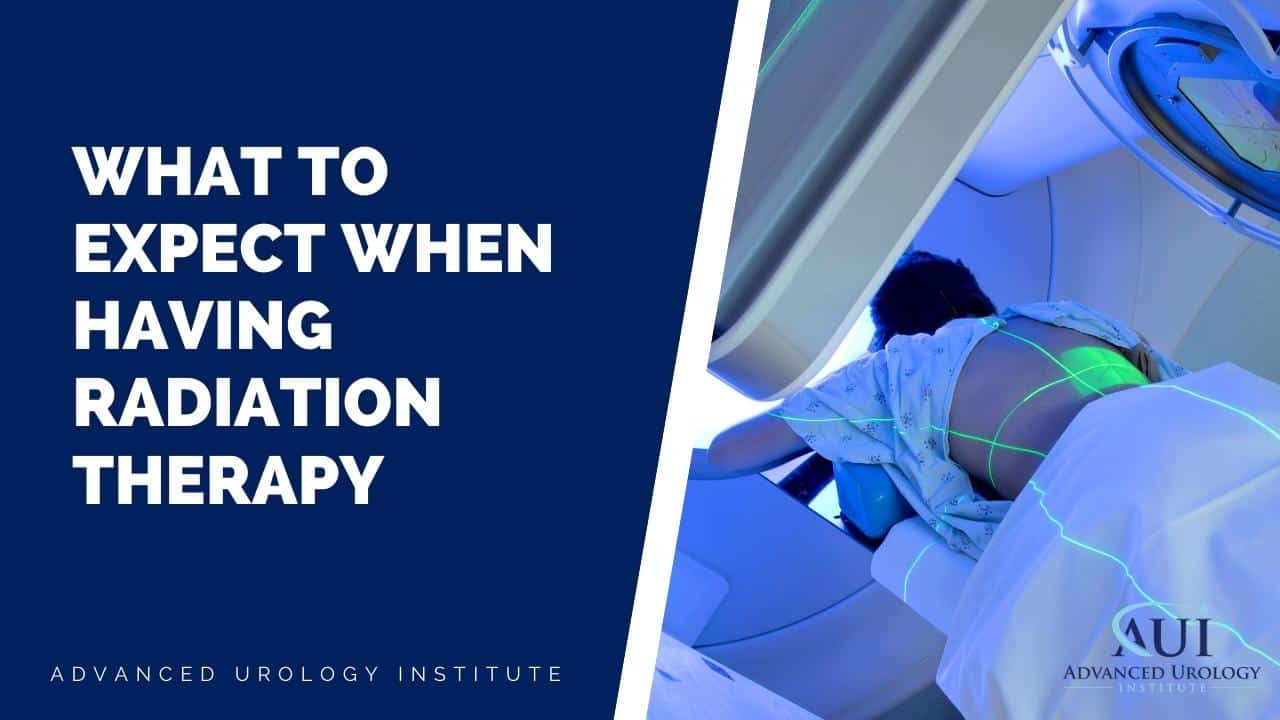Not many medical problems are as frustrating and as unbearably painful as kidney stones. With urinary stones, you experience a severe, sharp pain in your side and back. The pain comes in waves, fluctuates in intensity, and radiates to the lower abdomen and groin.
Continue readingCan you still have an orgasm after vasectomy?
 Rest assured, in virtually every case, you will have normal orgasms after a vasectomy. And you’ll also continue to ejaculate during those orgasms.
Rest assured, in virtually every case, you will have normal orgasms after a vasectomy. And you’ll also continue to ejaculate during those orgasms.
A vasectomy is specifically surgically elected to stop sperm from being part of the ejaculate in order to prevent pregnancy. But in all other respects, it doesn’t change anything about sexual function. It doesn’t stop you from ejaculating during sexual intercourse or masturbation. Neither does it stop you from achieving orgasms.
How does a vasectomy work?
The vasectomy procedure involves either cutting or blocking off two sperm-carrying tubes called the vas deferens that lead directly from the testicles. This procedure disrupts the flow of sperm to the penis during sexual activity preventing sperm cells from leaving the body.
But having a vasectomy doesn’t stop your body from working normally. Your testicles will continue to produce sperm as usual. And your prostate gland and seminal vesicles will continue to produce semen. The only difference is that the sperm will no longer mix with the semen.
After a vasectomy, the sperm produced by the testicles doesn’t leave the body. Neither are the cells stored in your body. Instead, the sperm cells are broken down and reabsorbed by your body with no adverse effect on your sexual desire, erections, and performance.
Even without a vasectomy, sperm is usually produced and reabsorbed if they don’t leave the body during sexual intercourse or masturbation. So the process is normal and natural and has no effect on your sexual drive or performance.
No noticeable change in the ejaculate
Since your prostate gland and seminal vesicles will continue to produce the fluid that is predominant in your ejaculate, you’ll still have unaltered orgasms and unchanged ejaculations. The reason for this is that a typical ejaculate before a vasectomy is 95-99 percent semen and only 1-5 percent sperm.
So when sperm is stopped from being part of the ejaculate, there is no significant reduction in the volume, quality or other characteristics of the ejaculate other than the absence of sperm. You’ll still produce more or less the same quantity of fluid during orgasm with the same amount and texture of semen.
No effect on testosterone
A vasectomy has no effect on your ability to produce the male sex hormone testosterone. Once testosterone is produced in your testicles the hormone is transported through your body via the bloodstream. Since a vasectomy doesn’t change the flow of blood from your testicles to the rest of the body it won’t affect your testosterone levels.
So the good news is that a vasectomy will not affect your sexual performance. Sex will be the same as before but without the risk of making your partner pregnant.
After a vasectomy, your sex drive and ability remains intact and there is no change in your erections or on the feeling and sensation you have during ejaculation. In fact, neither you nor your partner will notice a change in the ejaculate and in the orgasms.
No effect on muscle contractions
Orgasms are usually associated with a series of intense muscle contractions. Since a vasectomy does not interfere with the pelvic and sphincter muscles that contract during orgasm, you’ll still reach powerful and pleasurable orgasms. Plus, the procedure doesn’t interfere with the nerve impulses received from the penis.
Safe and secure vasectomy
Are you looking for a safe and permanent form of contraception? At Advanced Urology Institute, we offer vasectomies for men interested in the highest and most reliable form of birth control.
All vasectomies are completed on an outpatient basis with the procedure taking 20-30 minutes. Afterward, expect to go home and rest for about 48 hours, then engage in lighter activities for the next 7 days followed by going back to your routine after a week.
We are proud that our vasectomy procedure:
- Is 99.99 percent effective in helping you prevent pregnancy
- Has no long-term effects on your health
- Does not affect your hormone levels, sex drive, erections, ejaculations, and orgasms
- Does not interfere with sex or the spontaneity of sex
- Gives you a simpler, safer and more reliable alternative to female sterilization
We also provide vasectomy reversals.
For more information on vasectomy and vasectomy reversals, visit the site “Advanced Urology Institute.”
What is the primary symptom of bladder cancer?
 Blood in the urine is the primary symptom of bladder cancer. In fact, 8 in 10 people with bladder cancer will have blood in their urine, a condition doctors call hematuria.
Blood in the urine is the primary symptom of bladder cancer. In fact, 8 in 10 people with bladder cancer will have blood in their urine, a condition doctors call hematuria.
Generally, if you have visible blood in the urine there is an elevated chance that bladder cancer might be a concern.
Non-specific sign of bladder cancer
Blood in the urine is the most common but not a very specific sign of bladder cancer. Blood in your urine could suggest common conditions such as urinary tract infection, benign (non-cancerous) tumors, kidney stones, or other benign kidney diseases.
So it’s important you tell your doctor if there is blood in your urine so that other conditions can be ruled out.
What is the color of urine when there is bladder cancer?
Due to the presence of blood, urine can be rusty or deep red in color. In some cases, the urine may be dark brown.
However, when the blood in urine is microscopic, it may not be detectable to the naked eyes so a urine test will be essential as a first order diagnostic tool.
Bladder cancer and its symptoms can be subtle and oftentimes there’s little to no pain initially.
As your bladder cancer progresses, you may experience the following:
- Urinate more often than usual (urinary frequency)
- Pain or burning sensation during urination
- Uncontrollable urge to urinate (urinary urgency)
- Pain in your pelvis or lower back
- Difficulty beginning urination (urinary hesitancy)
- Getting up several times at night to urinate
- Weak urine stream or trouble urinating
These symptoms may also be caused by other conditions, such as bladder stones, urinary tract infection (UTI), an overactive bladder, or an enlarged prostate (in men). You’ll need to have the symptoms checked by your doctor so that the cause can be found and treated.
What are the signs of advanced bladder cancer?
When bladder cancer has grown larger or has spread to other parts of the body, it can cause other more severe symptoms.
Some of the symptoms include:
- Pain in the side or lower back
- Being unable to pass urine
- Feeling weak or tired
- Swelling in the feet
- Bone pain
- Weight loss
- Loss of appetite
Again, many of these symptoms can be caused by other conditions. So it is important that you get checked by your doctor. If your doctor suspects that you have bladder cancer, the physician will order more specific tests and exams to confirm the cancer.
At Advanced Urology Institute, we offer diagnostic and treatment services for bladder cancer.
For more information on the diagnosis and treatment of bladder cancer, visit our website AdvancedUrologyInstitute.com
How long does radiation treatment take?
Key takeaways
- Radiotherapy is a cancer treatment that uses high doses of radiation to destroy cancerous tumor cells. It can be administered externally or internally, and the length of treatment depends on the type, location, and characteristics of the tumor.
- External radiotherapy is typically given daily, from Monday to Friday, for five to eight weeks, with breaks on the weekends to allow healthy cells to recover. The length of treatment may vary depending on the specific tumor and the location.
- External radiotherapy is a painless process that typically takes 30-45 minutes, including set-up time, but the actual treatment only takes 2-5 minutes. The patient lies on a treatment table and is positioned under the radiation machine while special shields or blocks are used to protect healthy tissues.
 Radiation therapy delivers controlled, safe and effective doses of radiation to cancerous tumors. The tumor cells are exposed to high doses of radiation that destroy their genetic material and eventually damage or kill them. Hence the cancer can no longer grow, multiply or spread after the treatment. Though the radiation affects all the cells, healthy ones are able to recover fully from the effects of the treatment.
Radiation therapy delivers controlled, safe and effective doses of radiation to cancerous tumors. The tumor cells are exposed to high doses of radiation that destroy their genetic material and eventually damage or kill them. Hence the cancer can no longer grow, multiply or spread after the treatment. Though the radiation affects all the cells, healthy ones are able to recover fully from the effects of the treatment.
Radiotherapy is generally administered either externally or internally. During external radiation therapy—the most common form of the treatment—a machine is used to direct high-energy rays at the cancer. In contrast, internal radiotherapy (also called brachytherapy) uses a radioactive source that is temporarily or permanently implanted directly into the cancerous area.
So how long does the radiation therapy take?
The exact duration of the treatment depends on the type, characteristics, and location of the tumor. The length of treatment also depends on the dosage to be delivered, the number of fractions to be given, the treatment plan created by the radiation oncologist, and whether it is external or internal radiotherapy.
For example, if you have a deeper tumor, then you may require a more-focused beam delivered for a shorter period of time. But if you have a larger, shallow tumor, then you may need treatment for a longer period.
Equally, since the radiation must be given in a way that has minimal adverse effects on healthy cells, a shorter length of exposure is necessary if the tumor is located in more delicate organ (like the brain) or is in close proximity to very sensitive body tissues.
Your radiation oncologist will assess your tumor and make the necessary prescription. Then, by working with your radiation oncology team, the oncologist will determine how best to deliver the prescribed dosage, how many treatments are necessary, and how long it should take.
Next, your radiation oncologist will oversee the simulation of treatment to ensure that appropriate dose is given to the right location and that as little as possible reaches normal tissue. The simulation is followed by the testing of the delivery set-up to check the performance and positioning of the equipment to be used to give the treatment. After that, your treatment visits begin with the radiation therapist in charge of administering the daily fractions.
How long does external radiation therapy take?
External radiotherapy is typically delivered daily, from Monday through Friday, for five to eight weeks. Weekend breaks are factored into the treatment schedule to allow healthy cells to recover. Each treatment is offered on an outpatient basis.
But there are exceptions to this schedule. Some tumors may require treatment for less than five days per week and only need treatment for one to two weeks. Specifically, shorter durations of two or three weeks in length are commonly used in palliative care—the use of radiation to relieve cancer symptoms. Still other tumors, such as certain brain cancers, may require just a single treatment.
External radiation therapy is a painless process and is almost like having a regular x-ray. You’ll be in a room for 30-45 minutes because of the time it takes to set up equipment and place you in the correct position, but the actual treatment takes 2-5 minutes.
Once in the room, you’ll lie on the treatment table. You’ll then be positioned under the radiation machine. Your radiation therapist will place special shields or blocks between the machine and other parts of your body to protect normal tissues. Thereafter, you’re expected to remain still, though you don’t have to hold your breath.
After you’re in the correct position, your radiation therapist will move into a separate, nearby room to turn on the machine and begin the actual treatment. The therapist will watch you on a monitor and you’ll be able to communicate with the therapist through an intercom.
How long does internal radiation therapy take?
Brachytherapy uses radiation implanted inside the body to treat cancer. The radiation implant is placed as close as possible to the tumor in order to concentrate the radiation on the cancer cells and minimize radiation damage on normal tissue around the tumor. The radioactive material is sealed in a thin wire or hollow tube (catheter) and implanted directly into the cancer affected area on a temporary or permanent basis.
Internal radiation therapy is used when the oncologist decides that the best way to treat the tumor is to expose it to a higher radiation dose. The radioactive implant is closer to the cancerous cells and delivers a higher dose over a shorter period of time. The treatment is ideal for several types of cancers, including breast cancer, brain tumor, gynecological cancer (like ovarian and cervical cancer), lung cancer, and head and neck cancer.
The time taken for brachytherapy and whether it is done on an inpatient or outpatient basis depends on the type of therapy used and the nature of the cancer. In some cases, internal radiotherapy can be completed within three to five outpatient treatments of a few minutes each. But in other cases, the radioactive implant may be left in place for up to a week and there is need for a hospital stay during that period.
Finishing your radiation therapy sessions
It is important to finish all sessions of radiotherapy. And never to miss or delay treatments because this may reduce the effectiveness of the radiation in killing the tumor cells.
You should remember that your doctors are not just bothering you with making several hospital visits. There is need for different sessions because radiation is destructive and should not be delivered all at ago. In fact, if the recommended dosage was to be given once, it would pose a greater risk to healthy tissues and produce more adverse effects.
At Advanced Urology Institute, we spend the necessary time, effort and expertise to design a detailed treatment plan for radiation therapy. We offer the treatment in conjunction with other therapies and with the help of experienced oncologists and a multidisciplinary cancer care team.
We are also committed to reducing the time our patients take in treatment and often implement maximized aggressive treatments when necessary. Contact us today to learn whether radiotherapy is right for you and the various options available for you. For more information, visit the site “Advanced Urology Institute.”
References
- “What is Radiation Therapy?” Cancer.Net, American Society of Clinical Oncology, www.cancer.net/navigating-cancer-care/how-cancer-treated/radiation-therapy/what-radiation-therapy
- “External Beam Radiation Therapy.” American Cancer Society, www.cancer.org/treatment/treatments-and-side-effects/treatment-types/radiation/external-beam-radiation-therapy.html
- “Radiation Therapy.” CancerQuest, Winship Cancer Institute of Emory University, www.cancerquest.org/patients/treatments/radiation-therapy
What can cause an elevated PSA?
Key takeaways
- The PSA test measures the quantity of a protein produced by cells of the prostate gland in a blood sample. It is typically used to screen for and monitor prostate cancer in men.
- Elevated PSA levels can also be caused by non-cancerous conditions such as age, prostatitis, benign prostatic hyperplasia (BPH), and urinary tract infections.
- To use an elevated PSA as the basis for ordering a prostate biopsy, it is now recommended that the level of PSA is monitored over time and any changes are monitored regularly, with a suspicious lump detected during a DRE being a more accurate basis for suspecting prostate cancer.
 Prostate-specific antigen (PSA) is a protein produced by cells of the prostate gland. It is synthesized by both normal and malignant cells and released in blood. The PSA test measures the quantity of this protein in a blood sample, which is then reported in nanograms of PSA per milliliter (ng/mL) of blood. A PSA level of 4.0 ng/mL and below is often considered normal.
Prostate-specific antigen (PSA) is a protein produced by cells of the prostate gland. It is synthesized by both normal and malignant cells and released in blood. The PSA test measures the quantity of this protein in a blood sample, which is then reported in nanograms of PSA per milliliter (ng/mL) of blood. A PSA level of 4.0 ng/mL and below is often considered normal.
What causes an elevated PSA level?
The blood PSA level is typically elevated in men with prostate cancer. Therefore, the test is usually ordered in conjunction with the digital rectal exam (DRE) to screen men that are asymptomatic for prostate cancer. It is also recommended for monitoring the progression of prostate cancer in men already diagnosed with the disease, and to test men with prostate symptoms to find out the nature of their problem.
Apart from prostate cancer, there are a number of conditions that may increase the PSA level. For instance, PSA is elevated with age, usually due to enlargement of prostate tissue over the years. Prostatitis (inflammation of the prostate), which is a condition common in men under 50 years due to bacterial infection, tends to result in increased PSA level. Other conditions that lead to increased PSA level include benign prostatic hyperplasia (BPH), urinary tract infections, prostate injury, recent ejaculation, high parathyroid hormone, and surgical procedures.
Normal versus abnormal PSA level
Although a PSA level of 4.0 ng/mL or below is often considered normal, the level of the protein can vary over time in the blood of the same man, making what is usually taken as the normal range less accurate. In fact, studies have indicated that some men with PSA level below 4.0 ng/mL have prostate cancer while many men with levels above 4.0 ng/mL have been found free of the cancer.
Besides, due to the various factors that may cause a fluctuation of PSA level, such as age, prostatitis, BPH, and urinary tract infections, having a fixed normal range for all men is unreliable in some cases. Equally, since PSA test results vary from one laboratory to another and because drugs like Dutasteride (Avodart) and Finasteride (Proscar) that are used to treat BPH tend to lower PSA level, a single elevated PSA may not be very helpful.
Therefore, to use an elevated PSA as the basis for ordering a prostate biopsy to ascertain whether prostate cancer is present, it is now recommended that the level of PSA is monitored over time. A continuous trend of increasing PSA in blood over a prolonged period of time, together with a suspicious lump detected via the DRE, is a more accurate basis for suspecting prostate cancer and ordering for a prostate biopsy.
Elevated PSA in prostate cancer screening
For men without symptoms of prostate cancer, an elevated PSA level may be followed by a repeat PSA test to confirm the original finding. And if the PSA level is still high, the urologist may recommend that more PSA tests and digital rectal exams be done at regular intervals so that any changes can be monitored over time. If the PSA level continues to rise or if a suspicious lump is found during a digital rectal exam, the doctor may now order for confirmatory tests.
For example, a urine test may be requested to establish if the rising PSA level is due to a urinary tract infection. Likewise, imaging tests like cystoscopy, x-rays or transrectal ultrasound may help to show the size and nature of any lump.
And if the tests show there could be prostate cancer, the urologist will recommend a prostate biopsy. Multiple samples of prostate tissue are collected by inserting hollow needles into the prostate through the wall of the rectum. The samples are examined by a pathologist to confirm whether the cells are cancerous or not.
Elevated PSA in monitoring prostate cancer treatment
After treatment for prostate cancer, the urologist will want to continue to monitor the PSA level to establish whether the disease is recurring or not. An elevated PSA level after treatment is usually the first sign that the cancer is recurring. In fact, an elevated PSA after treatment often happens many months or years before the signs and symptoms of prostate cancer recurrence show.
A single elevated PSA test isn’t enough to conclude that the cancer has recurred. So the urologist will recommend that the test be repeated a number of times, and be done together with other tests, to check for evidence of prostate cancer recurrence. Repeated PSA tests help the doctor to establish a trend over time instead of relying on a single elevated PSA level.
At Advanced Urology Institute, we are committed to the highest standards of urologic care. We make sure to use the right diagnostic and treatment tests, techniques and procedures to deliver the best possible outcomes for our patients. That is why when it comes to the PSA test, we do not rely on a single elevated result to draw conclusions about your prostate health.
It is our practice to monitor elevated PSA for a prolonged period of time and to use the test alongside risks factors (age and family history) and other tests like the digital rectal exam, before we can make conclusions regarding your prostate health. We believe that an elevated PSA level is a valuable tool for early detection of prostate cancer and for successful treatment of the condition if the test is used properly. For more information on prostate cancer diagnosis and treatment, visit the site “Advanced Urology Institute.”
References
- “Prostate-Specific Antigen (PSA) Test Fact Sheet.” National Cancer Institute, U.S. National Institutes of Health, cancer.gov/types/prostate/psa-fact-sheet
- “Prostate Enlargement (Benign Prostatic Hyperplasia).” National Institute of Diabetes and Digestive and Kidney Diseases, U.S. Department of Health and Human Services, www.niddk.nih.gov/health-information/urologic-diseases/prostate-problems/prostate-enlargement-benign-prostatic-hyperplasia
- “Benign Prostatic Hyperplasia.” Medscape, www.emedicine.medscape.com/article/457394-overview
What to Expect When Having Radiation Therapy
Key takeaways
- Radiotherapy is a treatment for cancer that uses high doses of radiation to kill cancer cells. It may be used before, during, or after surgery, and can also be used in conjunction with chemotherapy.
- A radiation oncology team typically includes a radiation oncologist, radiation oncology nurse, medical radiation physicist, dosimetrist, and radiation therapy technologist, who work together to design and administer the treatment plan.
- Before radiotherapy treatment begins, a patient will typically be referred to a radiation oncologist, have their medical records reviewed, undergo a physical exam, and have imaging scans to locate the tumor. The patient will then be asked to sign a consent form and a treatment plan will be developed before the first session.
 Scheduling your initial radiotherapy session can create concern and anxiety. And of course many are worried and feel overwhelmed.
Scheduling your initial radiotherapy session can create concern and anxiety. And of course many are worried and feel overwhelmed.
At Advanced Urology Institute, we encourage our patients to be partners in the process and to educate themselves about the procedures. We believe that the more you know about radiotherapy before your treatment, the more confident you’ll be to face the treatment and the more likely you’ll play an active role in your recovery.
So what is radiation therapy?
Radiation therapy is the treatment of cancer using focused high doses of radiation to kill cancer cells. During treatment, specific amounts of the radiation are aimed at tumors or parts of the body affected by the cancer. Once administered, the radiation kills, stops, or slows down the growth of cancer cells.
Radiotherapy may be used before surgery to shrink a tumor to a smaller size. But it may also be used during surgery to target certain cancer cells. In some cases, radiation therapy is used after surgery to destroy the remaining cancer cells.
When paired with chemotherapy, it can help to improve treatment outcomes. And in cancer cases where a cure is not possible, radiation therapy can be used for palliative purposes—to reduce pain, pressure or other side effects of treatment.
While the radiation affects all cells, healthy ones are able to repair themselves and recover their normal cell function after treatment. Alternatively, unhealthy cells, such as cancer cells, aren’t able to repair after radiation. Hence, the treatment helps to destroy and eliminate unhealthy cells with minimal adverse effects on healthy cells.
What is a radiation oncology team?
Typically, radiotherapy is designed and administered by a team of highly trained medical professionals. The team usually includes a radiation oncologist, radiation oncology nurse, medical radiation physicist, dosimetrist, and radiation therapy technologist.
The radiation oncologist is the doctor who specializes in delivering radiotherapy for treating cancer and who oversees the overall treatment protocols. The doctor works closely with other team members to develop the treatment plan.
The radiation oncology nurse is skilled and experienced in caring for patients receiving radiation therapy. The nurse answers patient questions about the treatment, monitors the patient’s health during the treatment, and helps to manage the side effects.
The medical radiation physicist designs the treatment plan and is an expert in using radiation equipment. To ensure the right doses are administered with accuracy and precision, the radiation physicist is a key member of the team.
And finally, the radiation therapy technologist (radiation therapist) will directly operate the treatment machines such as a linear accelerator during therapy sessions and give the scheduled treatments. Other professionals might include social workers, nutritionists (dietitians), dentists, and rehabilitation therapists, such as physical therapists or speech therapists.
What happens before your treatment?
You’re usually referred to a radiation oncologist when your doctor believes radiotherapy might be an option worth considering. The radiation oncologist will then review your medical records, conduct a physical exam, and order various tests. The doctor then explains your options, speaks with you about the potential benefits and risks of the treatment and answers questions.
If you decide to proceed with radiotherapy, you’ll be asked to grant permission by signing the consent form. Your treatment team will then design the treatment plan before your first session.
Your treatment team will use imaging scans, such as computed tomography (CT), X-ray, and magnetic resonance imaging (MRI) to identify the tumor location. You’ll then receive small marks on your skin to assist the team in targeting the radiation beam at the tumor.
In addition, you may be fitted with immobilization devices such as tapes, foam sponges, headrests, simply molds or plaster casts. These items will help you stay secure and in the same position throughout treatment. If the radiation is targeting your head or neck, you may receive a thermoplastic mask, which is a mesh mask molded to your face and secured to the table.
Though it is crucial for your body to remain in the same position for each treatment, your oncology treatment team cares about your comfort and would like to hear your suggestions. So speak up about how you’re feeling. Communicate with the team so you can find a comfortable position every time.
What happens during treatment?
Radiotherapy is generally scheduled for five days a week over a six to seven week period although the treatment can last for as little as two to three weeks if the goal is merely palliative. Over the course of treatment, you’ll receive small doses (fractions) of daily radiation instead of large doses. This helps to best target cancer cells and protect healthy cells in the treatment area. Compliance and consistency is key. It is advisable that you complete all your sessions as scheduled and not miss or delay any treatments.
Before treatment is administered, your radiation therapy technologist will ask you to change into a gown and lie on the movable bed. The marks on your skin are used to position the machine and table—though you may be positioned using molds, boards or special holders. If necessary, special blocks or shields are used to protect your normal organs. You’ll then have to remain still in that position during your treatments breathing normally.
For each treatment session, you’ll be in the room for 10-30 minutes with the radiation administered for 1-2 minutes of that time. As soon as the treatment begins, the radiation therapy technologist will leave you alone in the room with a closed circuit TV and an intercom. The technologist will see and hear you at all times. So if you think you need to move, just notify the therapist and the machine will be turned off and adjusted.
The technologist controls the machine from outside as treatment progresses and monitors the machine at all times. The treatment is painless and you’ll not see, smell or hear the radiation. In between your treatment sessions, you’ll need to undergo various tests and checks to confirm that the treatment is going on as earlier planned.
For instance, port films will be taken to ensure the positioning remains as it should be. Weekly blood tests may also be run to check your blood cell counts. Plus, your radiation oncologist will meet with you once a week to assess how your body is responding to treatment. Be sure to tell the doctor of any changes or concerns.
Top-notch radiotherapy services
At Advanced Urology Institute we provide cutting-edge treatments for cancer. Our radiotherapy service is tailored to deliver specifically targeted radiation to precisely target and kill cancer cells.
For more information on radiotherapy and other forms of cancer treatment, visit the site “Advanced Urology Institute”.
References:
- “Radiotherapy.” National Cancer Institute, U.S. National Institutes of Health, www.cancer.gov/about-cancer/treatment/types/radiation-therapy.
- “Professions in Radiation Therapy.” RadiologyInfo.org, The Radiological Society of North America, www.radiologyinfo.org/en/info/professions-radiation-therapy.
- “What to Expect When Having Radiation Therapy.” Cancer.Net, American Society of Clinical Oncology, www.cancer.net/navigating-cancer-care/how-cancer-treated/radiation-therapy/what-expect-when-having-radiation-therapy.
Individualized Treatment for Prostate Cancer – Dr. Rishi Modh
“Prostate cancer has to be an individualized conversation.” says Dr. Rishi Modh of Advanced Urology Institute in St Petersburg, FL.
Continue readingWho is Dr. Amar Raval and Why Did He Choose Urology?
Dr. Amar Raval of Tampa, FL talks about why he chose urology as his specialty in the field of medicine. Learn more here.
Continue readingWhat are the Conditions We Treat at Advanced Urology Institute?
 Are you looking for comprehensive, effective, and safe urology services in Florida?
Are you looking for comprehensive, effective, and safe urology services in Florida?
Advanced Urology Institute is here for you.
With a healthcare institure designed to provide excellent, compassionate, patient-centered urologic care, Advanced Urology Institute offers top-notch, life-changing, and life-saving urology services.
Through our experienced board-certified physicians, we’ve become a one-stop center for evaluation, diagnosis, treatment, and care for all types of urological conditions.
We have well-equipped, thoroughly-resourced urology centers throughout the state of Florida, ensuring you can enjoy and access the highest level of care from a facility near you.
What conditions do we treat?
At Advanced Urology Institute, we use a multidisciplinary approach to help our patients diagnose, treat manage and recover from all urologic conditions.
This includes prostate enlargement, urinary incontinence, overactive bladder, urinary tract infections, painful urination, kidney and bladder stones, erectile dysfunction, and cancers of the bladder and kidney, ureter, and testicles.
For the men, we offer diagnosis and treatment of:
- Enlarged prostate (BPH)
- Bladder problems
- Erectile dysfunction and male infertility
- Penis and testicle problems
- Low testosterone (low T)
- Peyronie’s disease
- Urinary incontinence
- Overactive bladder
- Vasectomy and vasectomy reversal
- Urinary tract infection
- Prostatitis
- Kidney stone removal
For the women, we diagnose and treat:
- Chronic pelvic pain
- Vaginal dryness
- Vaginal pain
- Pelvic organ prolapse
- Urinary tract infections (UTIs)
- Urinary incontinence
- Overactive bladder
- Interstitial cystitis
- Pyuria
- Kidney and bladder stone removal
Life-saving cancer care
We offer safe and effective state-of-the-art treatments, minimally-invasive surgical procedures, and palliative care for cancer patients who desire the highest level of cancer care.
Our medical and surgical teams take a collaborative approach to treatment. Integrating expert knowledge from recent research and various innovations and specialties, we can ensure every patient receives the utmost care for the best possible outcomes.
We diagnose and treat:
- Prostate cancer
- Testicular cancer
- Bladder cancer
- Kidney cancer
- Urethra cancer
- Retroperitoneal tumors
- Soft tissue tumors
Wide range of revolutionary technology
Advanced Urology Institute boasts a friendly and supportive environment where providers offer urology services that integrate the latest technology in diagnosing and treating various conditions.
As a result, AUI has an exceptional track record in diagnosing and treating urological problems and a reputation for outstanding outcomes for patients.
Some of the techniques we use include:
- Minimally-invasive incontinence procedures
- Da Vinci robotic-assisted surgery for prostate, bladder, and kidney cancer, female pelvic prolapse, and pediatric and adult urologic conditions
- Minimally-invasive prostate surgery
- Reconstructive bladder and kidney surgery
- Partial and total nephrectomy
- Endoscopic stone surgery, including percutaneous techniques
- Minimally-invasive endoscopic, percutaneous, and shockwave nephrolithotomy for renal calculi
- Urodynamics
- Penile implant surgery
- Testosterone replacement therapy
- Vasectomy and vasectomy reversal
- Sacral nerve stimulator (interstim)
- Botox injections
- Pediatric surgery, including circumcisions, hypospadias, and orchidopexy
- Cryoablation and cryotherapy for prostate cancer
- MRI fusion biopsies of the prostate
- Radiotherapy including brachytherapy, oncology services, and clinical trials
Safe, reliable, and effective urology care
At Advanced Urology Institute, we are committed to treating others as we would like to be treated. We value and prioritize the wellbeing of our patients and want to see them overcome their condition and live fulfilling lives.
We offer urology services tailored to our patient’s needs and give safe, effective therapies that will deliver the best outcomes.
When you visit AUI, you will feel at ease and encouraged by the support you will receive.
We are committed to answering all your questions and providing you with the best information to help you make the best decisions about your health.
Call us today to schedule your consultation and find relief from your urological problem.
Minimally Invasive Robotic Surgery with the da Vinci Surgical System – Dr. Rishi Modh
My name is Rishi Modh, I’m a board certified urologist with Advanced Urology Institute. My favorite part of the practice is doing robotic surgery. I really enjoy using the da Vinci Robot to treat peoples problems in a minimally invasive way. And
Continue readingWhat Are the Side Effects of Prostate Cancer Treatment?
My name is Rishi Modh, I’m a board certified urologist with Advanced Urology Institute.
So quality of life after prostate cancer can be a big problem for guys. We do a great job of treating the cancer but sometimes we’re left with side effects. Those side effects often include urinary incontinence for guys or erectile dysfunction. Thankfully now we have great solutions for those problems too. One of the best options we have for guys is penile implants. A penile implant is a device that is an hour long surgery with a small incision done as an outpatient where you go home the same day. This provides lasting great erectile function for men, it really restores your quality of life.
Treating Benign Prostatic Hyperplasia
My name is Amar J. Raval and I’m with Advanced Urology Institute. So one of the few things I specialize in my particular practice would be BPH or enlarged prostate. Whether it’s minimally invasive surgery like Urolift where you
Continue readingHow Does Dr. Yaser Bassel Approach Treating Low Testosterone?
My Name is Yaser Bassel, I’m a Board-Certified Urologist with Advanced Urology Institute. Low testosterone at this point has come to the forefront a lot of times because of the advertising done by manufacturers of Testosterone. But for men
Continue readingHow Did Dr. Brian Hale Become a Urologist?
Dr. Brian Hale of Tampa, FL talks about his journey to becoming a urologist at Advanced Urology Institute.
Continue readingHow Does Dr. Brian Hale Approach Bladder Cancer Treatment?
KEY TAKEAWAYS:
- Dr. Brian Hale uses a TURBT procedure to treat early-stage bladder cancer.
- For more advanced bladder cancer, Dr. Hale may need to perform a radical cystectomy to remove the entire bladder.
- Dr. Hale works closely with oncologists to provide comprehensive cancer care for his patients.
Dr. Brian D. Hale is a board-certified urologist in Tampa, FL, who is part of the Advanced Urology Institute. In this article, we will discuss Dr. Hale’s approach to bladder cancer treatment, including the types of procedures he uses to treat the disease.
Early-Stage Bladder Cancer
Fortunately, most patients with bladder cancer are diagnosed with early-stage cancer that can be cured with a simple outpatient procedure. Dr. Hale will typically remove the tumor using a transurethral resection of bladder tumor (TURBT) procedure. This is a minimally invasive procedure that involves using a cystoscope to remove the tumor through the urethra.
Advanced Bladder Cancer
If the cancer has advanced or is too large to be removed through a TURBT procedure, Dr. Hale may need to perform a more aggressive surgery. In some cases, he may need to remove the entire bladder in a procedure called a radical cystectomy. During this procedure, the bladder is removed along with nearby lymph nodes and the prostate or uterus in men and women, respectively. The urine is then diverted into a bag outside the body or into a new reservoir made from a piece of the small intestine.
Comprehensive Cancer Care
Dr. Hale works closely with oncologists to provide comprehensive cancer care for his patients. He may recommend additional treatments, such as chemotherapy or radiation therapy, depending on the stage and type of bladder cancer. He also provides ongoing monitoring to ensure that the cancer does not return.
Advanced Urology Institute
Advanced Urology Institute is the largest urology practice in Florida, with multiple locations throughout the state, including Tampa. Their team of experienced urologists, including Dr. Brian Hale, is dedicated to providing high-quality care to their patients. If you are in need of urological care, we highly recommend scheduling an appointment with Advanced Urology Institute.
TRANSCRIPTION:
My name is Brian Hale, I’m a board certified urologist working with Advanced Urology Institute.
So fortunately most of the patients that we find with bladder cancer have early stage
cancer that we can cure with a simple outpatient procedure.
If we find the cancer later or the cancer is too large or so large that it’s evading
into the bladder muscle, then we have to do a more aggressive surgery removing the entire bladder.
REFERENCES:
- “What is Transurethral Resection of Bladder Tumor (TURBT)?.” https://www.roswellpark.org/cancer/bladder/treatment/surgery/turbt.
- “Advanced Bladder Cancer | BCAN.” https://bcan.org/what-is-advanced-bladder-cancer/.
- “Bladder Cancer Early Detection, Diagnosis, and Staging.” https://www.cancer.org/content/dam/CRC/PDF/Public/8559.00.pdf.










